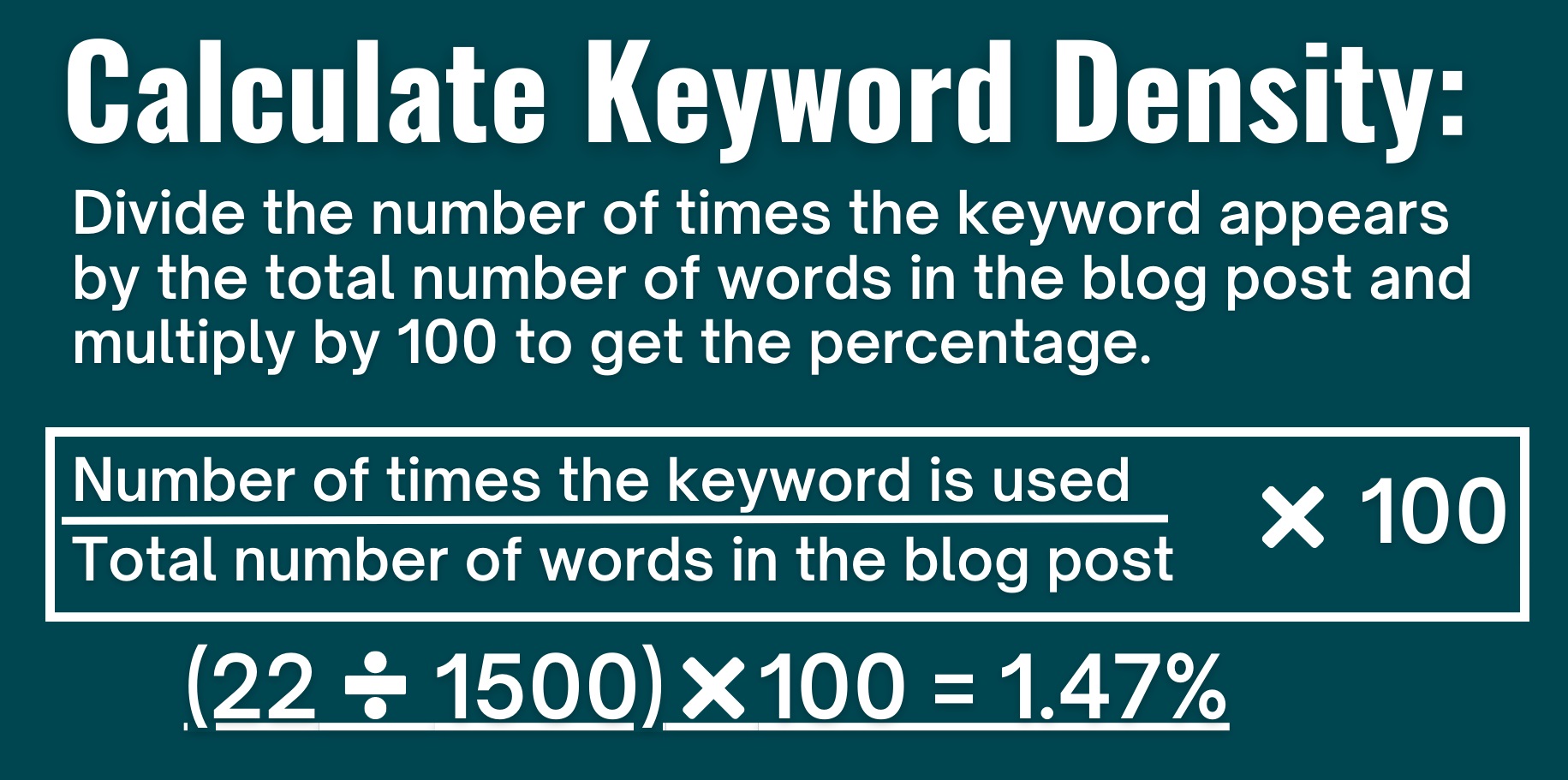Keyword density is the percentage of times a keyword appears on a web page compared to the total number of words on that page. It is a concept in search engine optimization (SEO) and has an impact on how search engines understand and rank the content on a website.
What’s the Right Keyword Density?
There’s no perfect answer to the right percentage to aim for when you are including keywords in your content. You should aim to keep your keyword density under 3% and generally anywhere from 0.5%-2% would be ideal.
Today, the focus of keyword density in SEO is to provide value for your users for the topics you are writing about. The right keyword density can help search engines better understand the content on a website and rank it accordingly. If it is too high, it can lead to penalties and a lower search ranking. Ultimately, you want to avoid keyword stuffing.
Keyword Density Video Explanation
You can watch our video below or watch it directly on YouTube.

How to Calculate Keyword Density
You must use the keyword density formula, which is in the image below. You use the total number of words on a web page and divide that by the number of times a keyword appears on that page. The result is a percentage that represents the keyword density for that page.
For example, if a web page has 1000 words, and the target keyword appears 10 times, the keyword density is 1%. While there are no hard and fast rules about keyword density, there are some general guidelines that we can follow to optimize our content for search engines. I generally try to keep my keyword density under 2%.
What is Keyword Stuffing?
In the early days of search engine optimization, keyword stuffing was a popular tactic that Marketers used to manipulate search rankings. Keyword stuffing is the practice of adding your targeted keywords repeatedly and unnaturally throughout your content. It became clear to search engines that this practice was not providing value to users, and as a result, search engines started to penalize sites for keyword stuffing.
Keyword Density Guidelines and Best Practices
We must ensure that our content reads naturally, and the keywords are used in a way that provides value to the user. In addition, you want search engines to know exactly what your content is about. You need to solve for search intent and avoid black-hat SEO techniques. Here are some general guidelines that we can follow to ensure that our content is optimized for search engines:
Step 1 – Use Your Main Keyword in Your Title Tag
The title tag is the most important on-page element for SEO. We should include our target keyword in the title tag to indicate to search engines what our page is about.
Step 2 – Use Your Main Keyword in Meta Description
When you are describing what your content is about, be sure to use your keyword once. By putting your targeted keyword in the description for the page, you are telling people and search engines what they can expect to learn from your page.
In the example below, you can see for this blog article that I use “Keyword Density” in the page title, the page URL, and the meta description.
Step 3 – Use Targeted Keywords in Subheadings
We should use our target keyword in the main heading and subheadings of our content. Doing so helps search engines better understand the structure of our content.
Step 4 – Use Main Keyword in the First Paragraph
When you are introducing your content, it’s important to mention your keyword in the first paragraph. You should also use our target keyword in the body of our content, but not excessively. We must ensure that our content reads naturally and provides value to the user.
Step 5 – Use Synonyms, Abbreviations, and Related Keywords
Using synonyms and related keywords can help us to expand the scope of our content and provide additional value to the user. It also helps search engines to better understand the context of our content.
Step 6 – Focus on providing value to the user
Ultimately, the focus of SEO is on providing value to the user. We should focus on creating high-quality content that answers the user’s query and provides additional value.
How to Check Your Keyword Density
There are a lot of keyword density checkers that you can try. We linked to some of the different options below.
– SEO Review Tools
– Small SEO Tools
– CheckSERP
– SEOBook
– WebFX
Step 1 – Enter any URL you want to check
Step 2 – Review the amount that certain keywords are used
What Are LSI Keywords?
LSI stands for Latent Semantic Indexing, and LSI keywords refer to the terms and phrases that are closely related to the main keyword or topic of a web page. LSI keywords are not synonyms, but they are words or phrases that are semantically related to the main keyword.
Why Are LSI Keywords Important?
The use of LSI keywords is an important part of on-page optimization for SEO because search engines use them to understand the content and context of a web page. By using relevant LSI keywords in your content, you can help search engines understand the topic of your page and improve your chances of ranking for related search queries.
In Summary
In conclusion, keyword density is a crucial aspect of on-page optimization. We must ensure that we use our target keywords appropriately to provide value to the user and optimize our content for search engines. By following these guidelines, we can create high-quality content that outranks other websites and provides value to our users. Remember that SEO is an ongoing process, and we must continually monitor and optimize our content to stay ahead of the competition.







